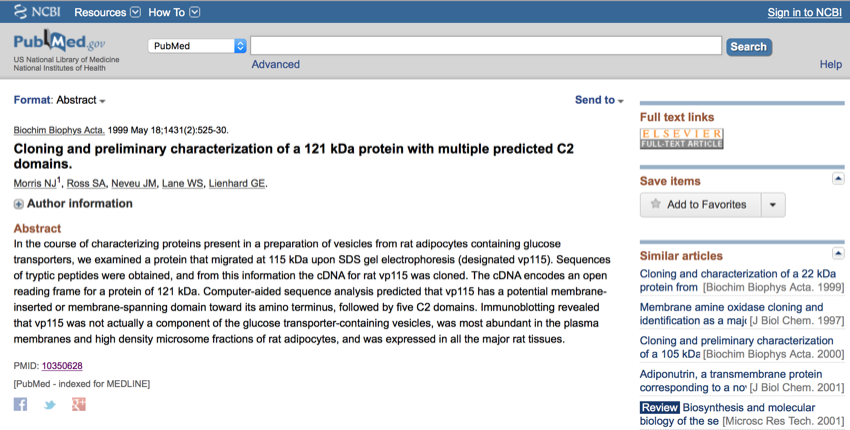DNA BLAST - links to more data
From the DNA
BLAST
results, it is possible to 'hop' to other information in the system such as who cloned the DNA, and whether or not it is involved in any diseases or conditions.
We will now find the paper associated with the top hit in your
BLAST
search.
- Scroll back up to the top of the table.
Your top hit shoule be:

Top hit in the DNA BLAST search
- Click on the accession number, i.e. AF099138.1. If your top hit is not AF099138.1, then either scroll down to find it, or click on this link


Nucleotide database entry for the blast search
By looking just at the DNA database entry, you should be able to answer the following questions:
From the DNA database entry, it is easy to go to the scientific paper
- In the DNA database entry click on the link next to the word PUBMED (it should be the number 10350628).
You should now have the abstract open in
PubMed

The PubMed entry associated with the DNA database entry
From the
PubMed
entry you should now be able to 'hop' to the other databases to answer the following questions:
Hint: Use the 'Related Information' menu
So far you have:
- carried out a DNA BLAST
 search
search - identified the year the DNA was sequenced
- identified the source of the material used for cloning
- identified the paper that reported the sequencing
- established that the DNA is not involved in a disease
We will now look at restricting DNA searches to just humans.


